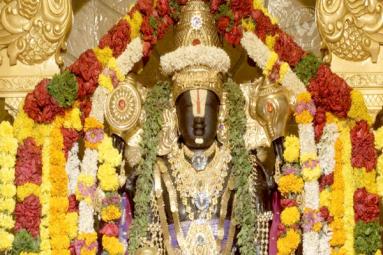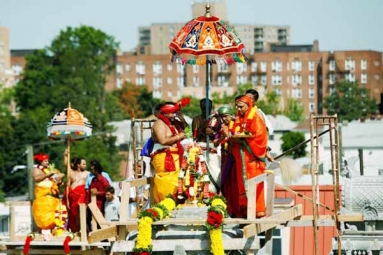800-Year-Old Ramappa Temple in Warangal Nominated for UNESCO World Heritage Tag
March 07, 2019 10:48
(Image source from: InRootz)
Telangana state is an abode to diverse heritage sites and since ages, it is winning hearts of scores of tourists from across the world.
Meanwhile, in a significant achievement, the Ramappa Temple in Warangal, a Kakatiya era structure, has been nominated for the UNESCO World Heritage site selection process for 2019. Moreover, it is India’s only entry this year.
Located in Palampet village in Mulugu district, the Ramappa Temple, also known as the Ramalingeshwara Temple, dates back to 1213 AD and was built by General Recherla Rudra, during the period of the Kakatiya ruler Ganapati Deva.
The temple, known for its beautiful intricate carvings, is the only temple in the country which has been named after its sculptor, Ramappa, who took 40 years to build the temple. The temple is an 800-year-old engineering marvel of the Kakatiya dynasty, for galore reasons.
The Speciality of Ramappa Temple
Speaking to The News Minute, one of the trustees of the Ramappa Temple, Professor Panduranga Rao said that it is the universal values of the temple structure that can fetch the temple its World Heritage tag in a year or two. Though the temple was built 800 years ago, the technology employed then made the temple stand tall, enduring the tyranny of ages.
“We expect the UNESCO teams to visit the temple in the coming months and ascertain its universal values that can put the Ramappa temple under the World Heritage sites. There are four major factors that make the temple truly one of its kind. The first is the floating bricks of the temple,” Rao was quoted as saying by The News Minute.
“The roof (garbhalayam) of the temple is built with bricks which are so light that they can float on water. The second is the sandbox technology on which the Ramappa temple was built, which made it resistant to earthquakes and other natural calamities. Depending on the size and area of the construction, the earth was dug three meters deep for the foundation. It was then filled with sand and for the sand mixture to become strong, it was mixed with granite, jaggery, and Karakkaya (Chebula),” the professor adds.
Thirdly, the temple is famously known for its intricate carvings, the most famous one being the flute at the entrance of the sanctum sanctorum, which when hit makes the sound of sa-ri-ga-ma.
“The temple was carved with dolomite rocks, which are so intricate that even a hair can pass through it. The pillars have 13 significant carvings, probably indicating the thirteenth century during which the temple was built,” Rao explains.
“The fourth is the might of the structure, which despite years of wear and tear, has not led to its collapse. There are cracks from the beams on the temple floor but despite this, the structure has not collapsed. Such was the architectural marvel of the Kakatiya dynasty which still remains unique,” adds Rao.
“We have been pushing for the heritage tag since 2012 and it was after the formation of the Telangana state that we got support from the government which helped us prepare the dossier after attending preparatory meetings by the Archaeological Survey of India (ASI). The Ramappa Temple truly qualifies to be a world heritage site as it is one of those few sites that humbles your body and spirit,” the professor notes.
The Kakatiya Heritage Trust and the state government are hopeful of making it to the list this time since the Ramappa Temple has been in the tentative list of the UNESCO world heritage sites since 2013.
By Sowmya Sangam











